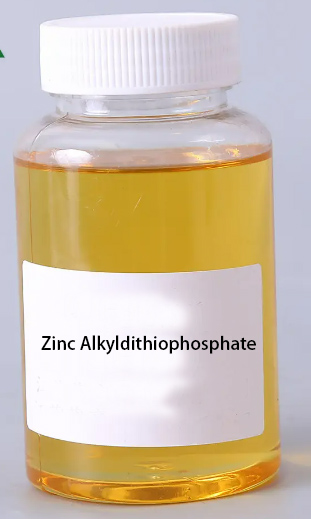ZDDP Oil
ZDDP Oil Additive: Engine Oil Additives That Work
In the world of lubricant formulas, oil additive with ZDDP play a crucial role in enhancing engine performance. Specifically, one of the most common and effective oil additives with ZDDP is zinc dialkyldithiophosphate, or ZDDP. ZDDP is an organic compound containing zinc and phosphorus, and it acts as an essential anti-wear additive in high ZDDP engine oils. Whether you are using mineral-based or synthetic oil, ZDDP oil is present to provide optimal lubrication for your engine.
It’s important to understand that ZDDP’s role as an anti-wear additive differs from extreme pressure additives. For flat tappet engines, which require protection in high load contact points, having a higher level of ZDDP is beneficial. If you’re wondering which oil is best for your engine, our comprehensive ZDDP oil list covers conventional, synthetic, and diesel oils, providing valuable insight into their zinc content levels.
Oil with ZDDP additive have been a staple in commercially available motor oils since their patent in 1944. Their ability to protect engine components during the break-in period is crucial for ensuring long-term engine health. For flat-tappet engines, we highly recommend using an oil with at least 1,000 ppm of ZDDP after the break-in process. In addition to conventional oils, there are specialized ZDDP oil additives available in the market that contain significantly higher concentrations of oil additive with ZDDP. These supplements can provide an extra boost of protection for your engine, especially in high-stress conditions.
How Do You Choose Oil for Your Car?
When it comes to choosing the right oil for your car’s engine, one of the primary decisions you’ll face is whether to opt for mineral or synthetic oil. Both types of oils have their unique characteristics, and the base oil constitutes a significant portion, typically around 80%-90%, of the overall composition of high ZDDP engine oil. Therefore, selecting the appropriate oil type becomes a critical factor in ensuring optimal engine performance and longevity.
Mineral oil and synthetic oil each come with their respective advantages and disadvantages. Understanding these differences is essential for making an informed decision based on your car’s specific needs and your driving style.
Mineral oil, derived from crude oil, has been in use for a long time and is more cost-effective compared to synthetic oil. It offers decent engine protection and lubrication, making it a suitable choice for regular driving conditions and everyday vehicles. On the other hand, synthetic oil is a laboratory-engineered product with a more refined molecular structure. This results in superior performance, especially in extreme temperatures and high-stress driving situations. Synthetic oil provides better engine protection, improved fuel efficiency, and extended oil change intervals, making it an excellent option for performance vehicles or harsh driving conditions.
In terms of ZDDP oil additives, both mineral and synthetic oils may contain zinc dialkyldithiophosphate or ZDDP, a crucial anti-wear additive. ZDDP forms a protective layer on engine surfaces, reducing friction and preventing wear and tear on critical engine components. For those with older cars or classic vehicles with flat-tappet engines, the ZDDP content becomes even more relevant. These engines benefit from a higher level of ZDDP (around 1000 ppm) to ensure proper protection of high-load contact points during operation.
Zinc Supplements for Motor Oil
The primary purpose of zinc in motor oil is to act as a protective barrier for the camshaft, one of the most critical and vulnerable engine components. As the camshaft is responsible for opening and closing the engine’s valves, it experiences constant contact and friction. The application of ZDDP oil additive forms a robust anti-wear layer on the camshaft surface, reducing friction and preventing premature wear and tear.
By incorporating oil with ZDDP additive, you can unleash a host of benefits for your engine. Notably, these supplements enhance engine longevity, keeping your cherished classic car or muscle car running smoothly for years to come. Additionally, the protective layer created by ZDDP oil reduces the risk of engine damage and ensures reliable performance, allowing you to confidently use modern motor oils that might have lower levels of naturally occurring zinc.
For vintage car enthusiasts and owners of older hot rods, ZDDP oil additive have become a staple in their summer maintenance routines. As temperatures rise and driving conditions become more demanding, the need for superior engine protection becomes paramount. ZDDP oil additives step in as the perfect solution to safeguard the precious engines of these timeless vehicles.
What Are the Effects of Zinc Paired with Your Engine Oil?
The essential role of the camshaft in your engine cannot be overlooked – it facilitates the flow of oil into the engine by operating the engine valves as you drive. However, driving at high speeds generates significant pressure between the camshaft lobes and the components pressing against them, known as followers. Under such pressure, motor oil tends to squeeze out and cause wear on these critical parts. This is where ZDDP oil comes to the rescue, creating a protective coating to safeguard the engine from this type of wear and tear.
While ZDDP proves to be a beneficial addition for camshaft protection, it’s essential to understand that what benefits one part of your engine may not necessarily be ideal for another. In this case, the zinc in ZDDP, when exposed to high temperatures during engine operation, may transform into ash. This ash eventually finds its way down the exhaust pipe and settles in the catalytic converter.
Now, the presence of zinc ash in the catalytic converter can pose challenges. Zinc ash is not compatible with catalytic converters and can negatively impact their performance and lifespan. An excessive buildup of zinc ash within the converter could lead to reduced efficiency and potential damage, affecting the overall emissions control system.
To strike a balance between camshaft protection and preserving your engine’s emission control components, it’s crucial to choose the right ZDDP oil formulation. Opting for an appropriate ZDDP oil that provides adequate camshaft protection while minimizing the risk of zinc ash buildup in the catalytic converter is key to maintaining a well-functioning engine.
Does Having Zinc Present Means it’s ZDDP?
While zinc, in its pure form, does provide anti-oxidation properties to motor oil, it doesn’t inherently contribute to the much-needed anti-wear protection that ZDDP oil offers. To clarify, ZDDP is a specific compound known as Zinc Dialkyl Dithiophosphate, specially formulated to provide excellent anti-wear properties in engine oil with ZDDP. It forms a protective film on critical engine components, reducing friction and preventing premature wear, particularly in high-stress conditions.
On the other hand, the presence of zinc alone does not deliver the same level of anti-wear protection as ZDDP. Pure zinc may exhibit anti-oxidation properties, which help prevent oil degradation, but it lacks the unique molecular structure and anti-wear capabilities that ZDDP brings to the table.
So, while zinc is undoubtedly beneficial in motor oil for other reasons, it’s important to recognize that true ZDDP oil is a specially engineered formulation with superior anti-wear qualities. When seeking optimal engine protection and longevity, choosing a motor oil containing ZDDP is the ideal choice, as it ensures your engine stays well-lubricated and protected during its entire lifespan.
ZDDP Replenishment Process
When it comes to replenishing ZDDP in used oil, a critical factor to consider is the required ZDDP concentration to achieve optimal wear protection, comparable to that of fresh oil. Studies reveal that a higher level of ZDDP is necessary to enhance the wear value and bring it closer to the levels observed in fresh oil.
As engine oil with ZDDP undergoes usage, the ZDDP content gradually depletes due to its interaction with the engine’s components to provide anti-wear protection. This reduction in ZDDP concentration over time can lead to decreased wear protection for critical engine parts, potentially compromising engine performance and longevity.
To address this issue, the ZDDP replenishment process becomes crucial. By adding an appropriate ZDDP oil additive to used oil, you can restore the depleted ZDDP content and enhance wear protection back to levels similar to those seen in fresh oil. This replenishment ensures that your engine continues to benefit from the vital anti-wear properties of ZDDP, safeguarding its longevity and performance.
How Much is the Correct Amount?
When it comes to replenishing oil with ZDDP additive in reclaimed oil, studies have shown that a smaller amount of ZDDP is required to enhance wear protection, bringing it closer to the levels observed in fresh oil. Specifically, adding approximately 0.75 wt% (weight percent) of ZDDP to the reclaimed oil has proven effective in improving wear values.
Through surface analysis of the reclaimed oil after the addition of 0.75 wt% ZDDP, researchers observed a uniform distribution of tribofilm. Tribofilm refers to the protective layer that forms on critical engine surfaces due to ZDDP’s action. This film acts as a barrier against friction and wear, contributing to the overall longevity of the engine components.
Furthermore, the surface analysis revealed no signs of abrasive wear on the engine’s surface, indicating that the addition of 0.75 wt% ZDDP effectively minimized wear and maintained the engine’s integrity. The findings highlight the significance of the correct ZDDP oil amount in reclaimed oil to ensure optimal wear protection. By utilizing the appropriate ZDDP concentration, you can revitalize the reclaimed oil’s anti-wear properties, ultimately preserving the engine’s performance a


